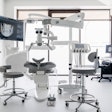Dear DrBicuspid Member,
At a time when there is clearly a need for more dentists in the U.S., it's reassuring to know that the number of people graduating from dental school and applying for residencies is on the rise.
Unfortunately, the number of available residency positions has not kept pace, according to Dental Match, the U.S. postdoctoral dental matching program. With the deadline fast approaching for aspiring general practice residents to submit their program preferences to Dental Match, it looks like the competition will be tougher than ever. Can the dental community help? Read more.
(By the way, we've created a new forum for students and residents to share their thoughts about residency programs around the country, along with other topics. Chime in here.)
In other news, a Pennsylvania dentist has been acquitted of charges that he sexually assaulted a female patient. The dentist's attorney argued that the accuser had a history of making false statements to police, but the case illustrates the importance of taking precautions when examining patients of the opposite sex. Read more.
And it turns out that a Seattle dentist being sued for botched breast surgery was fully qualified to do the surgery -- he's an M.D. as well as an oral surgeon. The doctor's lawyer claims the original story in the Seattle Post-Intelligencer "took on a life of its own." The plaintiff's lawyer maintains the defendant's credentials are still questionable. Who's right?
Are older adhesives better?
On the clinical front, there have been "precious few" advancements in dental adhesives for decades, according to Jeff Brucia, D.D.S., co-director of the Foundation for Advanced Continuing Education. He claims the best bond strengths are still found in fourth-generation products. Not surprisingly, some manufacturers disagree. Read more.
In other clinical news, a new study has found a link between endodontic disease and the Epstein-Barr virus, a form of herpesvirus that is associated with such diseases as infectious mononucleosis, malignant lymphomas, and nasopharyngeal carcinoma. This discovery could lead to new preventive and therapeutic treatments for endodontic disease.
Over on the Word of Mouth page, practice marketing expert Richard Geller tells you how to determine how much to invest in advertising per patient ("How much is a patient worth?"), while Dr. Helaine Smith emphasizes the growing importance of social media in dentistry. If you're not taking advantage of Facebook, YouTube, Blogspot, and other online networking and communication tools, she argues, you might be left behind.















